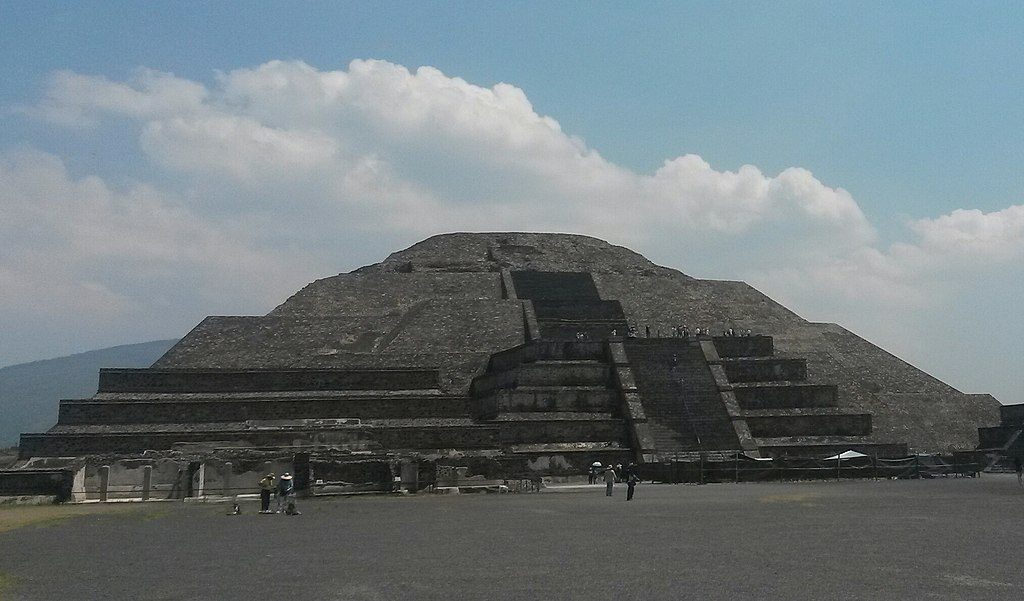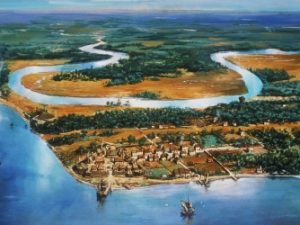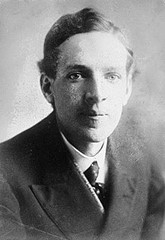At the heart of the mighty Aztec empire laid the capital Tenochtitlan, the Venice of the new world. No other civilization at the time could hope to compare to the city’s impressive pyramids, glamorous temples, and advanced aqueducts. At one point in history, Tenochtitlan was so populous that it contained around 200,000 inhabitants. But Tenochtitlan wasn’t always such a powerful urban site. When the Aztecs were immigrants looking for a new home, they were captivated by a mysterious ancient city. To this day, no one really knows who built it or what happened to its inhabitants. But to the Aztecs, they believed that out of this city emerged the whole of human society and order. This once glorious city was known as Teotihuacán.

There is only a minuscule amount of knowledge about Teotihuacán because a sufficient written record of the city does not exist. In fact, no one knows what the people of Teotihuacán called themselves or what the actual name of the city was. Indeed, it wasn’t until much later that the Aztecs named it Teotihuacán, which means “city of the gods.”1 To an extent, the Aztecs were not exaggerating, because Teotihuacán was once an electrifying center for religion, trade, and culture. At one point, the city contained over 2,000 apartment buildings, 600 pyramids, around 500 workshops, and countless temples, plazas, and palaces.2 But how, exactly, did Teotihuacán become such a powerful metropolis? Once again, let us look at what the Aztecs themselves have to say about it.
According to an Aztec legend, the world was created and destroyed four times before the creation of our current world. Each time the world was destroyed, the sun quickly perished alongside it, and a new sun, presided by a god, was required to create another world.3 The first world was under the dominion of Tezcatlipoca–the god of the night. During his era as the sun, there were no humans, but rather a race of vegetarian giants that roamed the Earth. Tezcatlipoca’s reign lasted for 676 years, but it was cut short when Quetzalcoatl, the god of the wind, grew displeased as he saw the other deity ruling above the land. So he used his staff to knock down Tezcatlipoca into the seas at the farthest corners of the earth. Angered by this, Tezcatlipoca gathered his strength and emerged from the water as a powerful jaguar, running through the Mesoamerican plains and mountains. Soon, many jaguars appeared alongside him, and they eventually hunted and killed every giant on Earth–thus bringing an end to the first world.4
Quetzalcoatl then presided over the second world and, under his rule, human-like beings began to appear. His reign was only 364 years long, however, for Tezcatlipoca wanted revenge on his cosmic rival. Using his dark powers to overwhelm the wind god, he launched a massive hurricane that swept away the sun and the people. Darkness then covered the world and the survivors hid in the trees, eventually turning into monkeys.5

Tlaloc, the rain god, found opportunity in the darkness, and quickly took charge over the new third world. Much to Tlaloc’s dismay, Quetzalcoatl was displeased with his rule, and he sent a rain of fire that again destroyed the sun and earth. The survivors who hid from the fire became the ancestors of the dogs, turkeys, and butterflies of today. The goddess of the lakes and oceans, known as Chalchiúhtlicue, then presided over the fourth sun and world. Although her reign lasted much longer than the previous two, tragedy was no stranger to the gods. Although no one knows exactly how the fourth world ended, Aztec accounts seem to tell the story of a great flood covering the Earth, turning the inhabitants of that world into fish, whales, and other creatures of the deep ocean.6
After some time, all the gods gathered at Teotihuacán. The earth was filled with darkness and a new sun was needed. The gods also decided that a moon should provide light when the sun did not. The rich god Tecuciztécatl proudly stepped forth to be the new sun. But a small, humbler god, Nanahuatzin also volunteered. After agreeing to share the Earth, the two made preparations to renew the world.7 For four days, Tecuciztécatl and Nanahuatzin prayed and fasted.8 When they finished, the other gods lit a great fire on the hard earth of Teotihuacán. In his lavish robes, Tecuciztécatl threw valuable quetzal feathers, stone flints, and incense into the fire as sacrifices. Nanahuatzin, having no riches to sacrifice, humbly offered weeds drenched in his own blood. The two slowly then approached the menacing flames of the fire. Tecuciztécatl intended to go first but he was ultimately driven back by the heat of the inferno. He approached it again for the second time… the third… the fourth. No matter what he did, the rich god was being held back by his fear. Then Nanahuatzin stepped forward. With his eyes closed and mind stilled, Nanahuatzin leapt into the great fire. Having been awestruck by his rival, Tecuciztécatl quickly rushed into the flames. Nanahuatzin then became the new sun, while Tecuciztécatl became the moon.9

The gods then waited for the new world to develop. However, after a while, the gods noticed that nothing was happening. Why wasn’t the new sun in motion? Why hadn’t the world been fully restored? After a discussion with Nanahuatzin, the rest of the gods then threw themselves into the fire, one by one, to restart the world. After all the gods sacrificed themselves, the age of the fifth sun began, and the world was now in motion. It was then, that out of Teotihuacán human society was born. The city flourished under the leaders and priests of Teotihuacán and it is said that after their deaths the pyramids of the sun and moon were built by giants.10
Though we may never know how this city actually came to be, it is no mystery that Teotihuacán was once a revered city in Mesoamerica. To this day, many visit the ruins of Teotihuacán and observe its sites, such as the “Avenue of the Dead,” a two-mile road that connects the Pyramid of the Moon to a large market. Other wonders include the towering Pyramid of the Sun, which was once a revered ritual site because it was built over a cave that many once believed was the place where humans emerged into the world.11 Some of the palaces and temples still stand today, such as the famed temple of Quetzalcoatl. While Teotihuacán may have a murky history, its name continues to stand against the sands of time, eternally offering its mysterious beauty to curious observers everywhere who yearn to learn more of humanity’s past.
- Early Civilizations in the Americas Reference Library, 2005, s.v. “Teotihuacán,” by Sonia G. Benson. ↵
- Charles Phillips, Aztec and Maya: The Complete Illustrated History: The Greatest Civilizations of Ancient Central America with 1000 Photographs, Paintings and Maps (New York: Metro Books, 2008), 55. ↵
- Early Civilizations in the Americas Reference Library, 2005, s.v. “Teotihuacán,” by Sonia G. Benson. ↵
- Charles Phillips, Aztec and Maya: The Complete Illustrated History: The Greatest Civilizations of Ancient Central America with 1000 Photographs, Paintings and Maps (New York: Metro Books, 2008), 160. ↵
- Charles Phillips, Aztec and Maya: The Complete Illustrated History: The Greatest Civilizations of Ancient Central America with 1000 Photographs, Paintings and Maps (New York: Metro Books, 2008), 160. ↵
- Charles Phillips, Aztec and Maya: The Complete Illustrated History: The Greatest Civilizations of Ancient Central America with 1000 Photographs, Paintings and Maps (New York: Metro Books, 2008), 161. ↵
- Charles Phillips, Aztec and Maya: The Complete Illustrated History: The Greatest Civilizations of Ancient Central America with 1000 Photographs, Paintings and Maps (New York: Metro Books, 2008), 161. ↵
- Early Civilizations in the Americas Reference Library, 2005, s.v. “Teotihuacán,” by Sonia G. Benson. ↵
- Charles Phillips, Aztec and Maya: The Complete Illustrated History: The Greatest Civilizations of Ancient Central America with 1000 Photographs, Paintings and Maps (New York: Metro Books, 2008), 162. ↵
- Early Civilizations in the Americas Reference Library, 2005, s.v. “Teotihuacán,” by Sonia G. Benson. ↵
- World History Encyclopedia, 2011, s.v. “The Teotihuacan Empire, 300–650 CE,” by Alfred J. Andrea. ↵




102 comments
Alexander Avina
I wasn’t fully aware of the extent of advanced civilization that was thriving in the Americas. This was a really interesting article about a subject that I wasn’t too familiar with. I enjoyed hearing about this subject on a deeper level. This article was written on a very intriguing subject. This was written very well and included many important facts that I didn’t know before. This was jammed with important and interesting information about this unique culture. This was definitely a very well-written article.
Kristina Tijerina
I enjoy the fact that the author implemented so much background history as to how Teotihuacan was built. It’s crazy to me that there are no written records that indicate who actually founded this once glorious city, and who lived on these grounds prior to when the Aztecs came. The legends that are told about how the city was created are so interesting, like vegetarian giants and jaguars killing them off, even the sacrifices. The different gods throwing themselves into the fire to make the city go in motion is really baffling. It’s really exciting to learn things about such interesting places that are big parts of history.
Patricia Arechiga
Though I have visited these ruins before, I never knew there was this much history behind the Aztecs. I find it crazy how people truly believed sacrificing lives pleased Gods. Knowing that the world was destroyed four times prior to the current world is pretty fascinating to me. The story behind the moon and ancestors to certain animals is pretty interesting and certainly out of the ordinary for me, I won’t lie. I honestly find history so interesting and truly wonder what life was like for the Aztecs. Hard to wrap my head around the fact that there is still so much mystery to them.
Margaret Maguire
This article is really interesting and neat. I know that the Aztecs believed in many gods and that there was a scare that the world was supposed to end because of the Aztec calendar ending in 2013 I believe, but other than that I don’t know a lot about the Aztec mythology. I didn’t know that they believed that the world was created and destroyed four different times before creating the one we know of today. I also learned that the capital, Teotihuacan, translates to “city of gods” which is pretty cool.
Brianna Trevino
This article was very informative behind the legend of Teotihuacan. It really hit my curiosity because I found it very interesting to learn that they believed that out of this emerged the whole human society. and order. It clearly meant a great deal of importance to the Teotihuacan people that these beliefs were true because the new world of the fifth sun began it was because of the sacrifice of the gods themselves.
Vanessa Quetzeri
This article is so interesting. I have visited the ruins several times, but never heard the story in such depth.The concept of sacrificing oneself for a new world to develop or just the fact that several worlds developed consecutively after another, will never fail to puzzle me. Whether this story is true or not, it is an explanation of how Teotihuacan came to be, and why it is considered a legend.
Amelia Hew
This is the first time I read about the Teotihuacán and the story was very intriguing. It fun to read about how the four worlds were destroyed and rebuilt again and how the survivors of the individual worlds were turned into different animals from different habitats. The part where the gods sacrificed themselves to form a new world makes this story unique from other mythologies. Personally, I really enjoy reading mythologies and this story sparks my interest in the Aztecs culture.
Kenneth Gilley
While I had heard of Teotihuacan before, I had not heard the legends behind it. It is a shame that the people who built the city did not leave us any written record of who they were or what they did. That Teotihuacan had a population of over 200,000 people at one time is astonishing. How could they have created such an organized society without writing?
Analisa Cervantes
Before now I had always believed Teotihuacán had been built by the Aztec peoples. I also never knew that before the Aztec’s settled there they were immigrants. I find it very amazing that the author included the Aztec creation story. It gives insight to their beliefs. I love history and learning more about the Aztecs culture helps us better understand how they lived their lives
Victoria Davis
It was so interesting to learn more history and the different stories that are out there. It really leaves you wanting to know more about Teotihuacan since its history is a little unknown, but hearing of how the world was created and destroyed four different times was very appealing. How each God played a role and the contribution they all needed to make for where we are now.